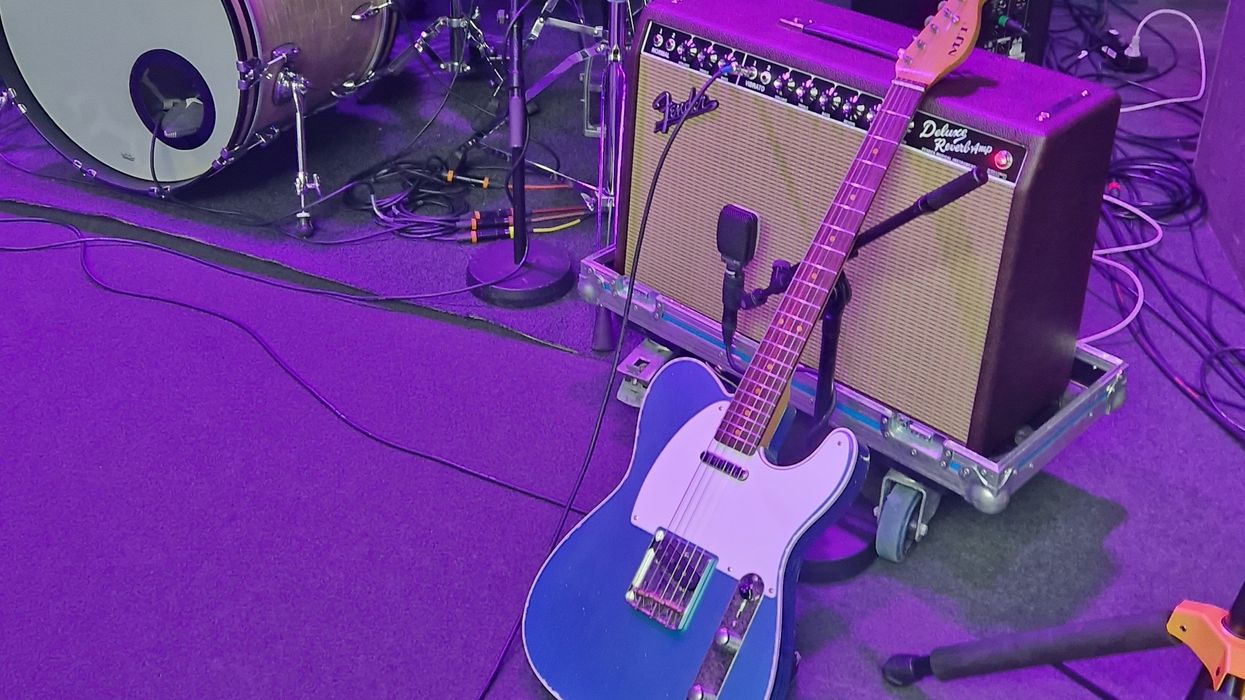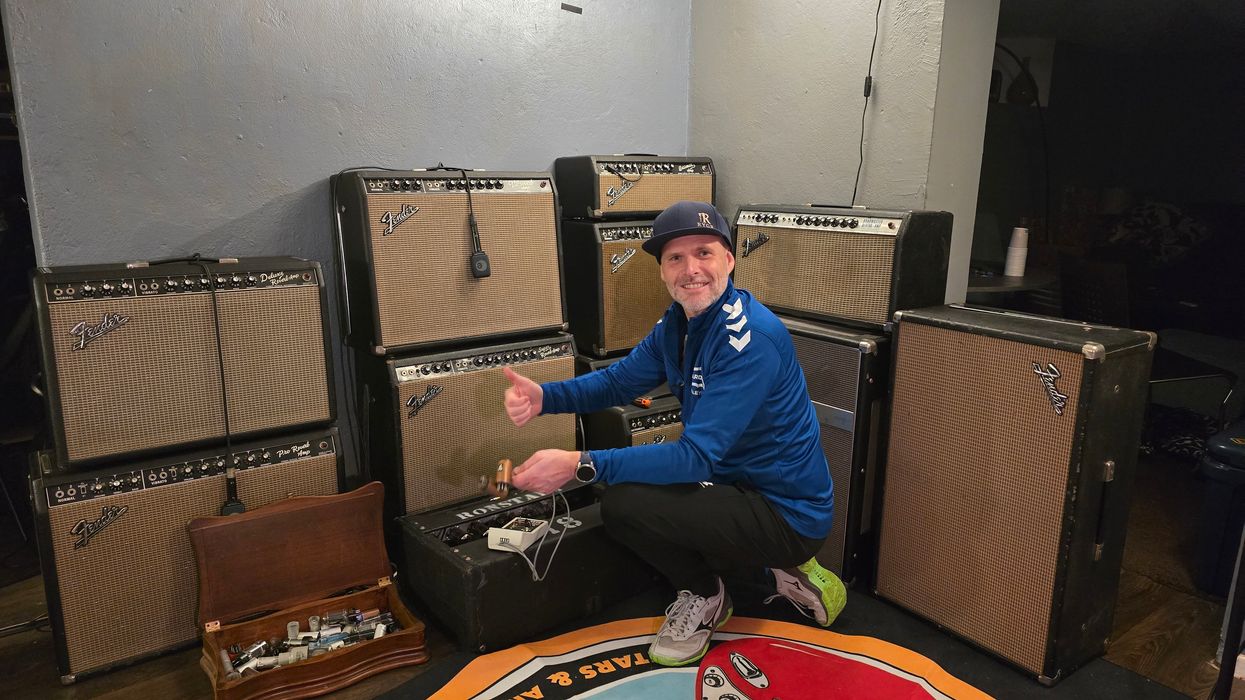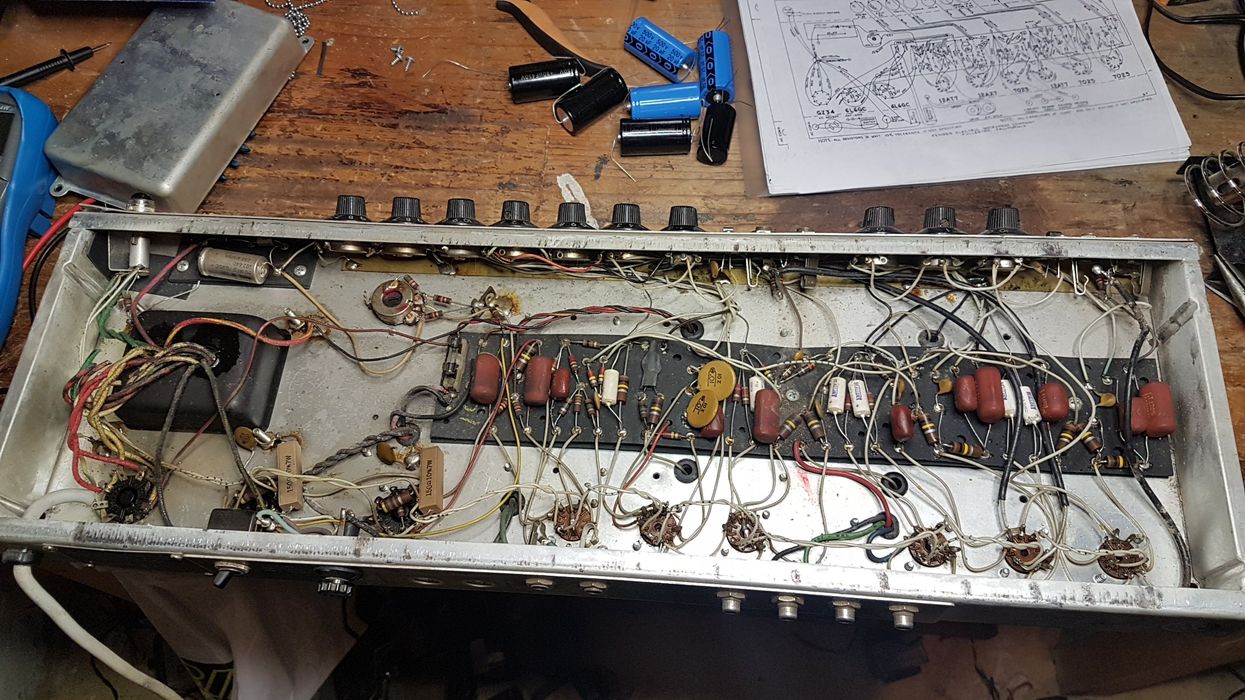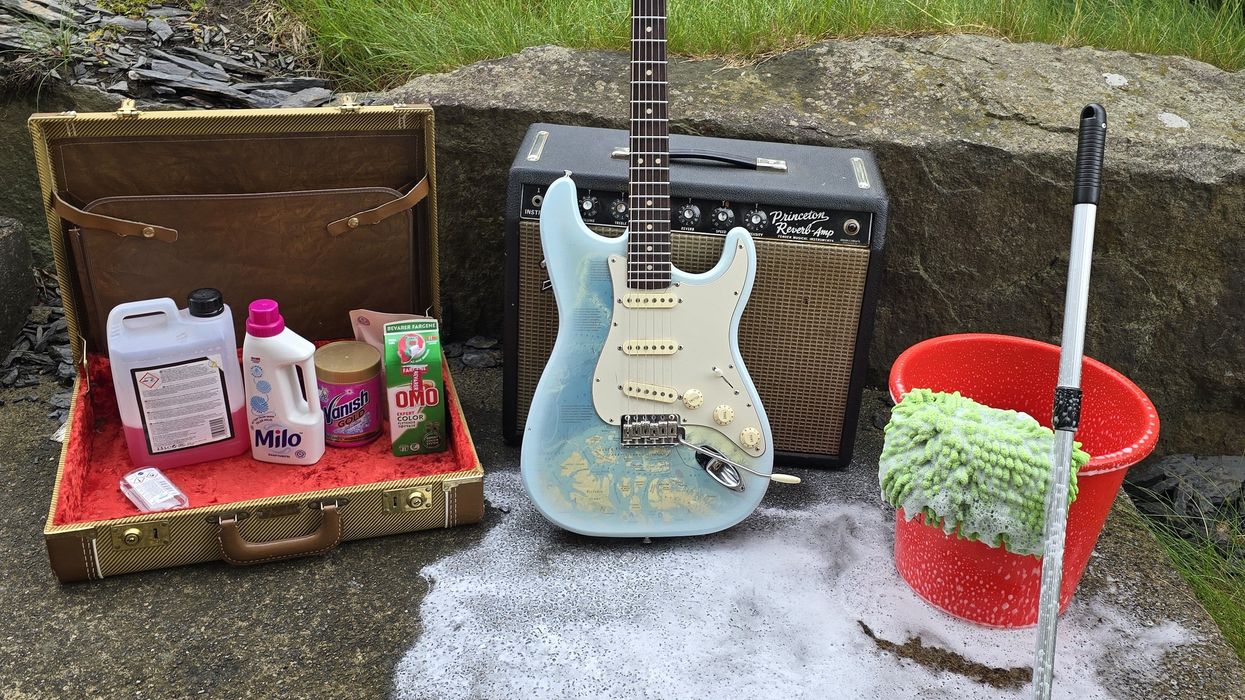Have you ever tried to plug your acoustic guitar into a classic-style Fender amp? There are some hurdles to overcome, and this month I’ll provide some advice on how to get past them. But first, some background.
Amps made for electric guitars are carefully designed and matched to the voltages and frequency profiles of signals delivered by electromagnetic pickups. An amp sounds best when it does a good job at amplifying or filtering out certain frequencies. So many of us have stumbled upon challenges when the input signal—say from an acoustic guitar or other instrument—is way different than what the amp expects.
A guitar signal is initially created by moving the strings. The more vibrating metal mass closer to the pickup’s magnet, the more magnetic pull and more current is induced inside the coil wire in the pickups. More windings and stronger magnets induce more current, but also reduce brightness and clarity. The coil-wire thickness, wire material, and coating material and thickness also play a role in signal strength and frequency response. The signal voltage produced by a pickup is low—typically between 0.1 and 1V—and contains frequencies between 80 and 1200 Hz.
On the amp side, there are even more factors that amplify or weaken certain frequencies—so-called frequency filtering. Take a vintage Fender Deluxe Reverb. It is designed with specific tubes, resistors, and caps in the preamp stage to amplify a weak input signal and shape it through EQ, mix in some reverb, and transport the result to the power amp circuit, which does three things. First, it splits and duplicates that result into an inverted signal, then it amplifies the two signals as much as possible, and then feeds them into each side of a power transformer that alters the resulting voltage to a suitable level for a loudspeaker. That’s typically 30 to 50V. The speaker cabinet and loudspeaker itself are the final stage in delivering a filtered and amplified guitar tone.
For acoustic guitars I prefer modern American-style speakers that can handle high power and both a firm bass response and a crisp top end.
If you hook up other instruments, like an acoustic guitar or a harmonica with a microphone, and feed an electric guitar amp their signals, you will get totally different results throughout the circuit. You may not get the tone you expect, or, in the worst case, you might damage the amp. But generally, all passive sources with electromagnetic coil pickups are safe to use. This includes piezo pickups mounted to the bridge of an acoustic guitar and vocal microphones. Since they are not powered by an external source like a 9V battery, they are passive and create a weak signal.
You should be careful using electrically powered sources like an acoustic guitar with a battery-powered preamp and EQ. Also, electric pianos, synthesizers, or Bluetooth speakers with mini-jack outputs are dangerous, too, since they can easily blow the loudspeakers due to a wrong volume or EQ setting. Electric pianos can sound very good through a vintage Fender amp. I’ve seen Fender Rhodes keyboards played through Twin Reverbs, and we’ve all heard organs through Leslie/Vibratone speakers, which can be run by Fender guitar amps.
Acoustic guitars with active pickups can be difficult. With typical default amp settings for electric guitar, the tone is narrow and focused around certain mid frequencies. It lacks fullness, top-end clarity, and overall balance. So, I have some tricks you should try if you’re experimenting with this option. First, set all the EQ knobs to 10. This allows the guitar signal to travel through the preamp section with minimum change of tone. Be very careful with volume and start low—at around 1.5—and increase from there. I find big, powerful Fender amps are best for this, since they have plenty of clean headroom and wide EQ possibilities with a full set of bass, mid, treble, and bright-switch controls. And that makes them less prone to howling feedback.
A big speaker cabinet will enhance the low end, allowing the preamp and power amp to relax more without maxing out clean headroom. Remember that the power and energy lie in the bass. I suggest the silver-panel 40-watt Bandmaster Reverb and 85-watt Showman Reverb as practical amp heads for acoustic purposes. I use my Bandmaster Reverb with a 1x12 extension cabinet loaded with an Eminence Maverick. For acoustic guitars, I prefer modern American-style speakers that can handle high power and both a firm bass response and a crisp top end. Speakers are very important for your tone. The guitar’s pickups are also important, together with a correct setup, so the action permits the optimum proximity of the pickups.
Acoustic pickups don’t have to be expensive. They just need to be balanced and clear. A good guitar amp and some careful adjustments of the controls will do the rest.


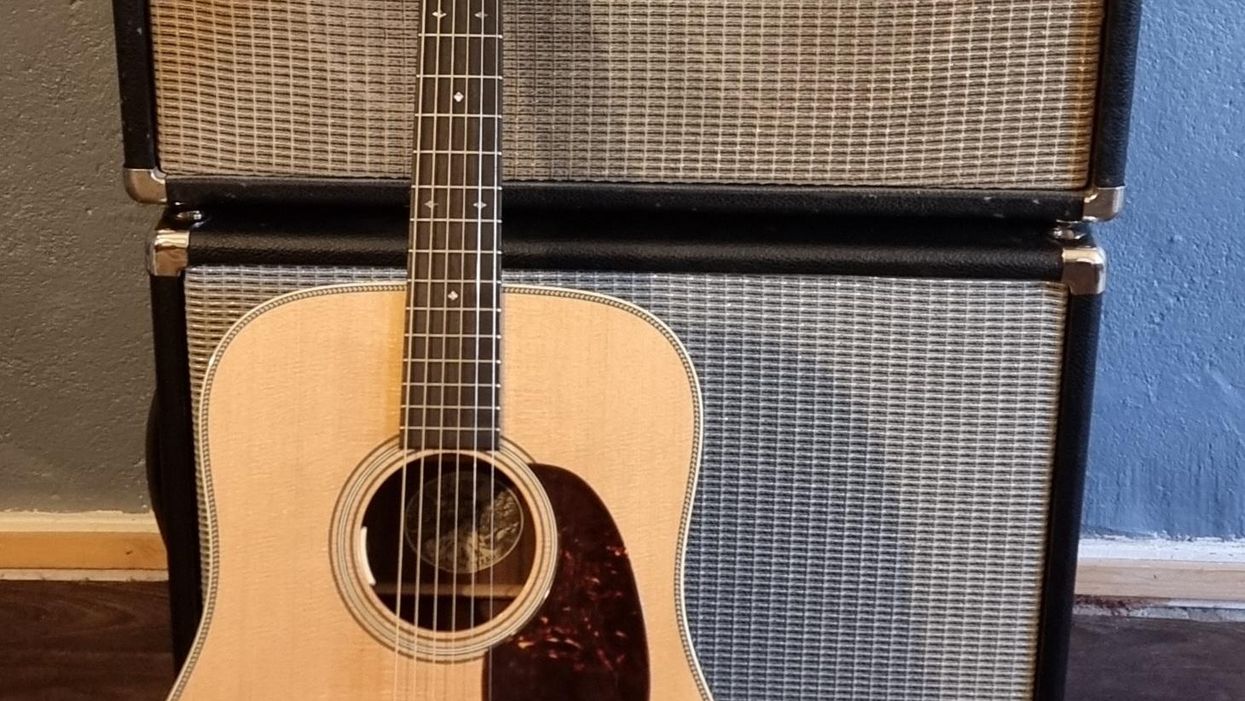



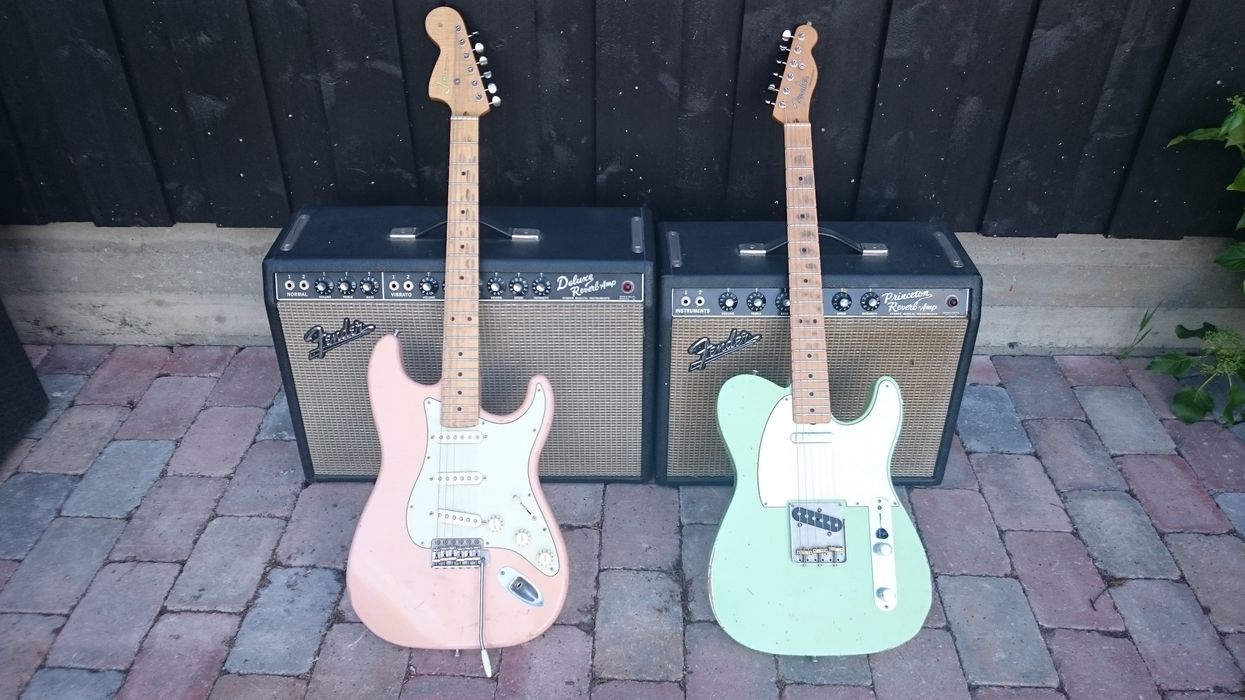
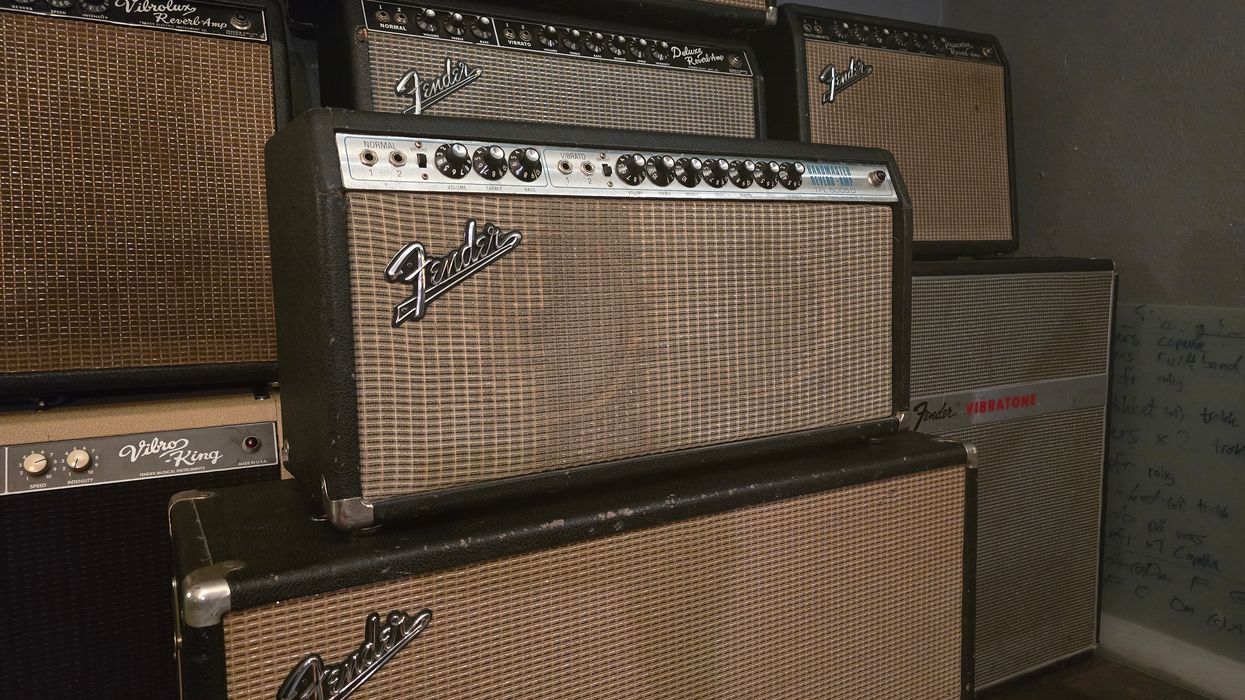
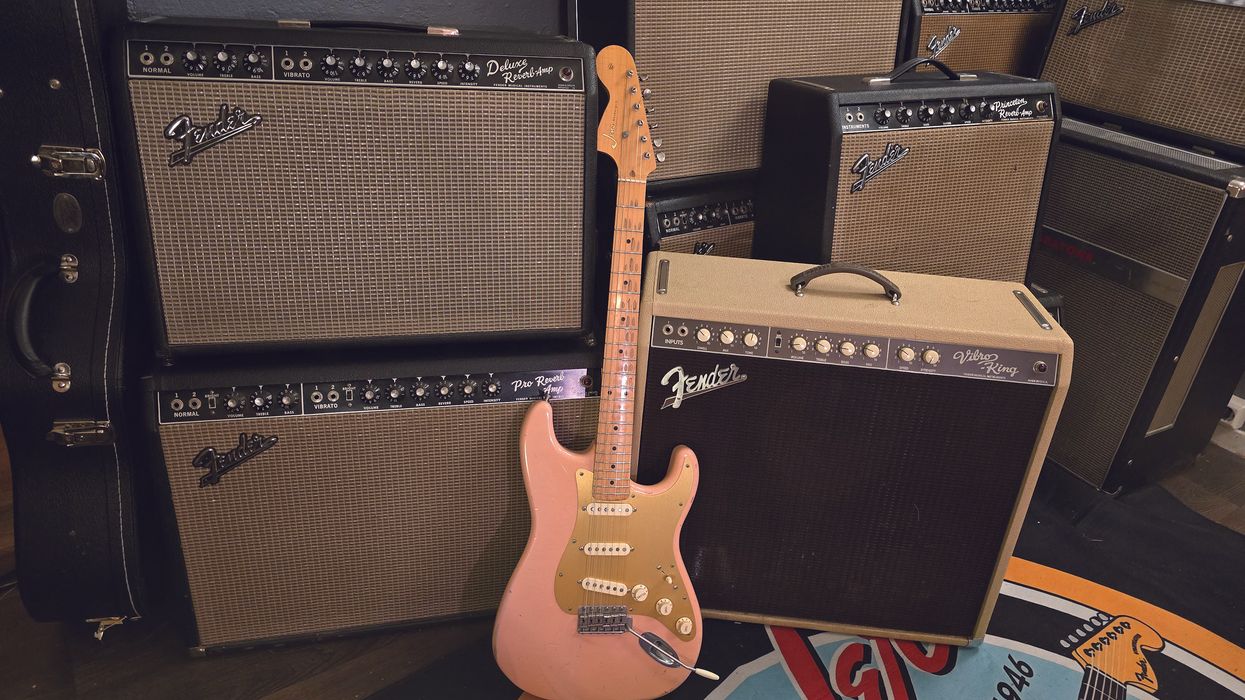


![Rig Rundown: Russian Circles’ Mike Sullivan [2025]](https://www.premierguitar.com/media-library/youtube.jpg?id=62303631&width=1245&height=700&quality=70&coordinates=0%2C0%2C0%2C0)



